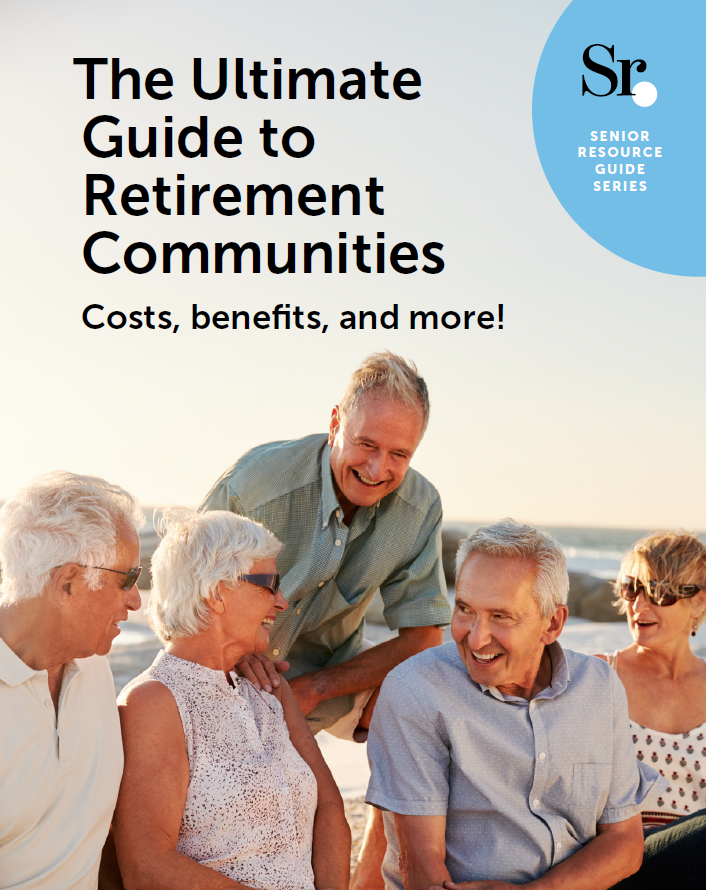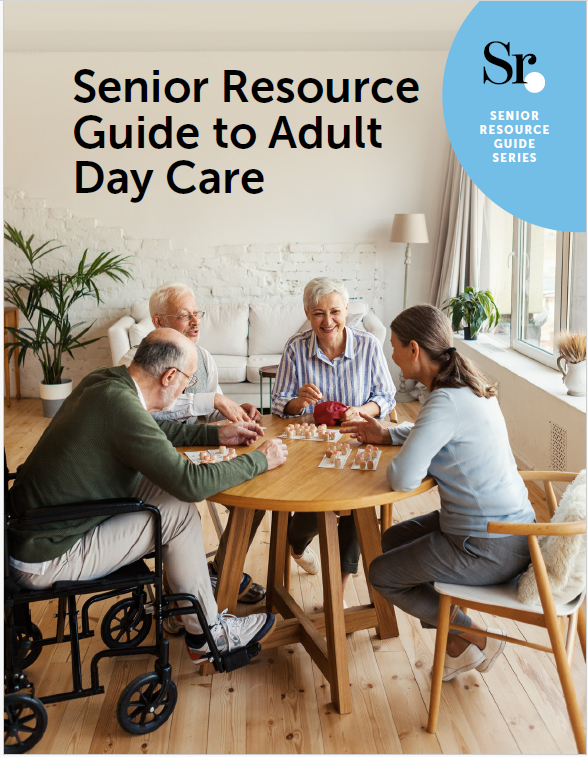The Ultimate Guide to Retirement Communities: Costs, Benefits, and Even More!

Retirement is one of the best times in our lives. However, a lot of things change as we age. Our health. Our relationship status. Even our living situations. While 77 percent of older adults want to age in place, others may choose to live in senior living communities. If you’re an older adult who’s looking for more information on retirement communities, you’re already in the right place. We’ve rolled up our sleeves and done your research for you. So, sit back, relax, and put on your reading glasses. Here’s everything you need to know about retirement communities.
- What is a Retirement Community?
- Types of Retirement Communities
- Active Adult Communities
- Assisted Living Communities
- Continuing Care Retirement Communities (CCRCs)
- Rental Communities
- Memory Care Communities
- Retirement Communities: An Overview
- Benefits of Retirement Communities
- Costs of Retirement Communities
- How to Choose the Right Retirement Community
What is a Retirement Community?

A retirement community is a housing complex specifically designed for independent older adults. From fitness centers to swimming pools to healthcare facilities, there’s no shortage of resort-style amenities. The main aim of these communities is to provide a safe and comfortable living environment for seniors. Typically, these communities boast a dedicated staff of chefs, healthcare providers, and hospitality workers. Of course, the living spaces also take into account seniors’ unique needs! Many come equipped with wheelchair accessibility, grab bars, and other safety features.
Many retirement communities offer maintenance-free living arrangements, where common areas and exterior maintenance tasks such as lawn care, landscaping, and snow removal are taken care of by the community management. This allows residents to enjoy a hassle-free lifestyle without the burden of home maintenance. Additionally, many retirement communities offer security features like gated entrances, security patrols, and emergency call systems to ensure the safety and well-being of residents.
Types of Retirement Communities

If you’re someone who has trouble making up your mind, then we’ve got good news for you! There are several types of retirement communities, each equipped with unique features suited to different lifestyles. Keep reading to find out more about these great communities!
Active Adult Communities

Designed for seniors who want to live an active, vibrant lifestyle, these communities offer a range of amenities and services. Active adult communities offer a wide range of amenities and facilities designed to promote an active and social lifestyle. These may include clubhouse facilities, fitness centers, swimming pools, recreational areas, and more! Of course, no retirement would be complete without social opportunities. Most active adult communities offer these in spades, boasting exercise classes, arts and crafts workshops, movie nights, and more! Other common services that active adult communities offer include:
- A community library
- Pickleball and bocce courts
- Golf courses
- Walking trails and community gardens
- Group outings, holiday parties, and potlucks
- Transportation services
Assisted Living Communities

These communities are perfect for seniors who need a little more assistance with daily activities, such as bathing, dressing, and medication management. Residents of assisted living communities receive assistance with activities of daily living (ADLs) such as bathing, dressing, grooming, toileting, and medication management. Typically, staff members are available around the clock to provide support and assistance as needed. Every resident of an assisted living community receives a personalized care plan tailored to their individual needs and preferences. Care plans are developed in collaboration with residents, their families, and healthcare providers so that each individual receives the appropriate level of care and support. Other common services that assisted living communities offer include:
- Housing, such as private one or two-bedroom apartments with kitchenettes and a living area
- Social and recreational activities
- Nutrition and meal services
- Medication management
- Healthcare monitoring
Continuing Care Retirement Communities (CCRCs)

These communities offer different levels of care depending on the resident’s needs. They usually have independent living, assisted living, and skilled nursing facilities under one roof, allowing residents to age in place. CCRCs offer independent living accommodations such as apartments, cottages, or villas for active older adults who can live independently without assistance. All residents enjoy a wide range of amenities, like dining options, recreational facilities, and social activities, promoting an active and engaged lifestyle. CCRCs also offer skilled nursing care for residents who require more intensive medical and personal care services. Other common services include:
- Multiple care levels, including memory care
- Housekeeping, maintenance, and landscaping services
- 24/7 security
- Fitness classes, arts and crafts, cultural outings, clubs, and more
- Transportation to medical appointments, errands, and social events
- Fine dining
Rental Communities

As the name implies, rental communities offer tenancy agreements with no buy-in fees or long-term commitments. Ideal for a senior who wants independence without buying a new home! Rental communities for seniors typically have age restrictions, requiring residents to be a certain age, often 55 or older. Some communities may have higher age requirements. These communities provide independent living options, offering apartments or condominiums specifically designed for seniors. Residents live in private units that range from studios to one or two-bedroom apartments. Additionally, they have the freedom to come and go as they please. You can expect the following services from most rental communities:
- Maintenance-free living
- Secure entrances, surveillance cameras, emergency call systems, and staff members with 24/7 availability
- Arts and crafts, game nights, movie screenings, book clubs, and organized outings
- Community amenities such as fitness centers, swimming pools, walking trails, and libraries
Memory Care Communities

For seniors with late-stage memory loss, such as Alzheimer’s disease or dementia, a memory care community may be the best possible choice. They provide specialized care and support to help residents maintain a high quality of life. Memory care communities have secure entrances and exits to prevent residents from wandering and getting lost. The physical layout of the community is designed to minimize confusion and maximize safety for residents with memory impairment. Memory care communities offer structured activities and programs designed to engage residents’ minds, bodies, and spirits. Other services that most of these communities offer include:
- Safe, secure environment with emergency response systems
- Secure outdoor spaces
- Family support and education
- Nutritious meals and dining assistance
- Regular health assessments, monitoring of chronic conditions, coordination of medical appointments, and communication with healthcare professionals
Retirement Communities: An Overview
| Retirement Community Type | Description |
|---|---|
| Active Adult Communities | Age-restricted communities for adults typically 55 and older. They boast independent living and a wide range of amenities, like fitness centers, clubhouses, and social activities. |
| Continuing Care Retirement Communities (CCRCs) | CCRCs offer a continuum of care from independent living to assisted living and skilled nursing care. Residents can transition between levels of care as needed while staying in the same community. |
| Independent Living Communities | Independent living communities cater to active seniors who don’t need assistance with daily activities. They offer private apartments or homes in addition to dining options, housekeeping, and recreational activities. |
| Assisted Living Communities | Assisted living communities provide housing, personal care services, and healthcare assistance for seniors who need help with activities of daily living (ADLs) but don’t require skilled nursing care. Residents live in private or semi-private accommodations. |
| Memory Care Communities | Memory care communities specialize in caring for individuals with Alzheimer’s disease, dementia, or other memory-related conditions. In addition to a secure environment and specialized care, they boast a staff of highly trained healthcare professionals. |
| Active Senior Apartments | Active senior apartments are age-restricted rental communities designed for independent living. They offer amenities and services tailored to seniors, such as maintenance-free living, social activities, and transportation options. |
Benefits of Retirement Communities

Retirement communities may be the answer for seniors who want to live stress-free in a community of like-minded seniors! They can also be a wonderful alternative to aging in place and have a wide array of perks that can make your golden years truly gilded. Here are just a few of the benefits you can expect from retirement communities.
A maintenance-free lifestyle
Many retirement communities offer maintenance-free living, with services such as lawn care, landscaping, home repairs, and housekeeping provided by the community staff. In other words, you can hang up your mop and put away your lawnmower for good because the staff will have you covered!
Social opportunities
Did you know that loneliness may be as detrimental to one’s health as smoking 15 cigarettes a day (according to the National Institute on Aging)? Loneliness can even chop a whole 15 years off somebody’s life. Yikes! Fortunately, retirement communities offer social and friend-making opportunities galore.
Healthcare services
Many retirement communities offer health and wellness programs to help residents maintain their physical and mental well-being. These programs may include exercise classes, health screenings, wellness seminars, nutritional counseling, and access to healthcare services. Many retirement communities also employ a staff of healthcare professionals, including physicians, registered nurses, and more.
Active lifestyle
Retirement communities promote an active and vibrant lifestyle, with opportunities for residents to engage in recreational activities, hobbies, and interests. Whether it’s participating in fitness classes, pursuing arts and crafts, joining clubs or interest groups, or exploring nearby attractions, residents have plenty of options to stay active and engaged. In other words, you’ll always have something to explore and do!
Safety and security
Retirement communities prioritize the safety and security of their residents. To this end, they often secure entrances, surveillance cameras, and emergency call systems. Peace of mind is important, especially as we age. So, if you want to be able to live comfortably and safely, a retirement community might be the right fit for you!
Continuum of care
Some retirement communities (such as CCRCs) offer a continuum of care, with different levels of care available on-site or nearby. This will allow you to age in place and seamlessly transition from different models of care as necessary.
Sense of community
It’s important for us to feel that we belong somewhere. Fortunately, retirement communities foster a sense of community and camaraderie among residents, with shared experiences, mutual support, and a supportive network of peers. This sense of community can lead to lasting friendships, increased happiness, and that oh-so-important sense of belonging.
Costs of Retirement Communities

The cost of retirement communities varies. Several factors, such as location, size of the unit, type of care, and more, may affect the price. The majority of retirement communities require a buy-in or entrance fee when you move in, ranging from several thousand to hundreds of thousands of dollars. However, some rental communities offer affordable monthly rates with NO upfront fees. Keep in mind that healthcare is not always included in the fee structure. According to a Place for Mom’s 2023 report on the cost of long-term care, the average monthly cost of independent living is around $3,000. Keep reading to find out more about the typical costs associated with different types of retirement communities.
Active Adult Communities
- Entrance Fees: Some active adult communities may require an upfront entrance fee, which can range from tens of thousands to hundreds of thousands of dollars. AARP estimates that the average entrance fee is around $400,000.
- Monthly Fees: Monthly fees for active adult communities typically cover amenities and services such as maintenance, landscaping, security, and access to community facilities. While these fees vary from facility to facility and state to state, residents can expect to pay an average cost of around $3,000 a month.
Assisted Living Communities
- Base Rent: Assisted living communities charge a base monthly rent for housing and basic services, such as housekeeping, utilities, and meals. The cost of base rent varies depending on factors such as location, size of the unit, and level of care required. The average cost of assisted living in the United States is around $4,500 per month, which totals around $54,000 annually.
- Care Services Fees: In addition to base rent, residents of assisted living communities pay fees for care services such as assistance with activities of daily living (ADLs), medication management, and healthcare supervision. These fees are typically based on the level of care needed and can vary accordingly.
Continuing Care Retirement Communities (CCRCs)
- Entrance Fees: CCRCs often require an entrance fee, which can vary widely depending on the size of the residence and the level of care provided. Entrance fees are quite steep, with the average totaling around $300,000 to $350,000.
- Monthly Fees: In addition to entrance fees, residents of CCRCs pay monthly fees that cover housing, meals, amenities, and healthcare services. These fees can range from a few thousand to several thousand dollars per month, depending on the level of care and services required. Typically, these monthly fees run from around $2,000 to $4,000.
Rental Communities
- Monthly Rent: Residents typically pay monthly rent in these communities. While the fees vary depending on one’s location and community, rent generally runs from around $2,000 to $5,000 per month.
Memory Care Communities
- Base Rent: Similar to assisted living communities, memory care communities charge base monthly rent for housing and basic services, along with additional fees for specialized memory care services and support. According to Dementia Care Central, the average monthly cost of memory care is around $6,160.
- Additional Fees: Memory care services may include specialized programming, trained staff members, secure environments, and personalized care plans tailored to the unique needs of individuals with Alzheimer’s disease, dementia, or other memory-related conditions. As such, some services may incur additional fees. Potential residents need to inquire more about the fee structure when touring a memory care community.
How to Choose the Right Retirement Community

Choosing the right retirement community is a big decision. Aside from the cost, there are countless other factors to consider! And while you can easily get overwhelmed and lost in a sea of questions, you don’t have to drown in uncertainty. Instead, take a deep breath and follow these steps.
1. Determine your needs and preferences.s
Step one is simple! Begin your journey by identifying your needs, preferences, and priorities for retirement living. Consider factors such as location, amenities, level of care required, and social activities. Of course, don’t forget budget constraints!
2. Research different types of retirement communities.
Next, explore the different types of retirement communities available, such as active adult communities, continuing care retirement communities (CCRCs), independent living communities, assisted living communities, memory care communities, and nursing homes. Each type offers different levels of care and amenities, so make sure you understand the differences and determine which type best suits your needs.
3. Visit potential communities.
Once you have narrowed down your options, schedule visits to potential retirement communities to tour the facilities. Make sure that you meet staff members and fellow residents so that you can get a feel for the atmosphere. Take note of the cleanliness, maintenance, and overall appearance of the community. Don’t be afraid to ask residents about their experiences within the community. Personal accounts are often the best way to gauge a potential community.
4. Consider the location.
Location, location, location. It’s a popular real estate idiom for a reason. Location is an important factor when choosing a retirement community. Before you sign any papers, make sure you consider factors such as proximity to family and friends, healthcare facilities, shopping centers, recreational opportunities, and cultural attractions. Also, think about whether you prefer urban, suburban, or rural settings. Then consider whether you want to remain in your current area or relocate to a different region. Do you like snow? Are you prepared to deal with inclement weather in a new location, such as hurricanes or tornadoes? Do you like warmer climates or colder climates? Make sure you consider every factor—no matter how small or trivial it may seem!
5. Evaluate amenities and services.
Assess the amenities and services offered by each retirement community and determine which ones are most important to you. Common amenities include fitness centers, swimming pools, fine dining, and recreational facilities among others. Choose a community that offers the amenities and services that align with your lifestyle and preferences.
6. Review costs and financial considerations.
The next step is one of the most important, so pay attention! Carefully review the costs associated with each retirement community. This includes entrance fees, monthly fees, additional charges for services and care, and potential fee increases over time. Consider consulting a financial advisor to help you determine your and to ensure that the chosen community is affordable in the long term. Be sure to inquire about any financial assistance programs or payment options that may be available. Does the community accept long-term care insurance? Private pay? Make sure to dot every I and cross every T!
7. Consider future care needs.
While none of us like to think about our health declining, you need to consider this when looking at retirement communities. Think about your potential future care needs and whether the retirement community offers a continuum of care that can accommodate changing needs over time. Consider your current health status. Will you need to transition between levels of care in the future? Do you believe you’ll ever need personal care assistance, skilled nursing, or memory care?
8. Seek input from others.
No man is an island, and this applies to decision-making! Don’t be afraid to consult with family members, friends, or trusted advisors when making your decision. They can offer valuable insights, perspectives, and support to help you evaluate your options and make an informed decision. You can even bring them to tour communities with you and get a second opinion.
9. Trust your instincts.
Last but not least, trust your instincts and choose a retirement community where you feel comfortable, safe, and happy. Pay attention to how you feel during visits and interactions with staff and residents. By following this step and others, you can choose the right retirement community that meets your unique requirements and find your new home, sweet, home!
Popular Articles About Retirement Communities
Originally published February 27, 2024








